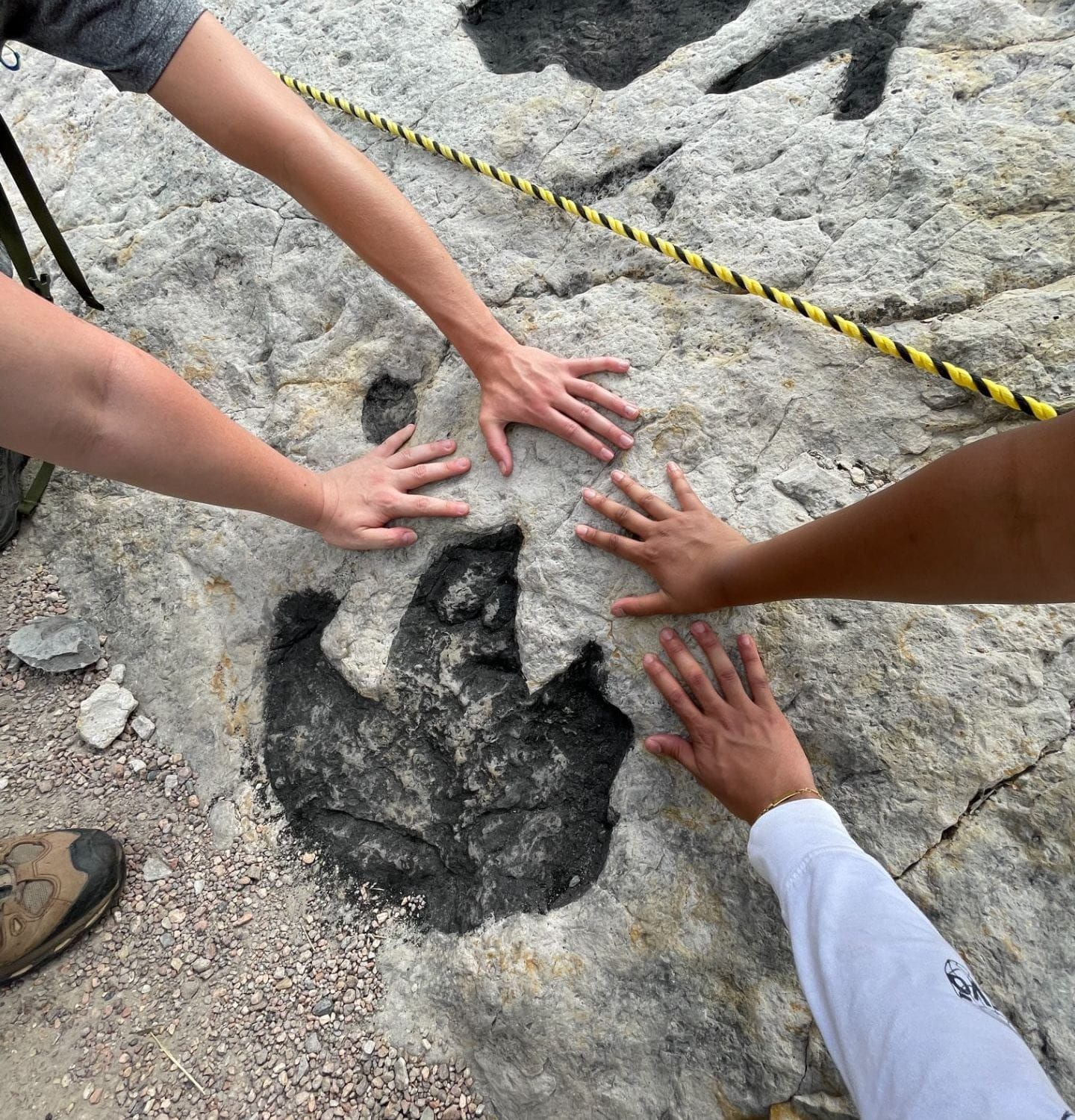
What do humans and dinosaurs have in common? Poop. It’s hard to imagine how such old poop ended up being preserved, but it’s hard to ignore the obvious evidence. Maybe perhaps it was because dinosaurs were big and produced lots of it, thereby increasing the odds of preservation over the last 300,000 to 65,000 million years ago? Who knows, but at the very least scientists will characterize and classify what they observe and study. In the case of preserved poop, which is a rock after the fact, its’ given name is coprolite. Yesterday, I learned- and I’ve been a geologist for more than 30 years and didn’t know this- that the term is the result of a feud between two famous paleontologists.
Our day began with a tour of the 2 billion year old history of the Front Range, starting at the unconformable contact with the 1700 million year old igneous basement of the Idaho Springs gneiss, and then hiking through 300 million years of sedimentary deposition and ending with a tour of the famous dinosaur beds of the Morrison formation.

It was at the end of this tour that I acquired my newfound knowledge about the origin of the term coprolite.

We departed the Red Rocks of the Fountain formation for Dinosaur Ridge, eastward towards Denver. From there, we boarded the wonderfully airconditioned ‘crocobus’ with our guide ‘PteranoDon’, which conveyed us through several million years of Mesozoic history.
We started at a site in the Dakota formation, the exposed shallow shore deposits of which were covered with spectacular dinosaur trackways, ripple marks and bioturbation. I was impressed with the non- destructive exhibition method for highlighting the trackways using charcoal!
Another stop revealed preservation of amazing soft sediment deformation ‘prints’ from an Apatosaurus.
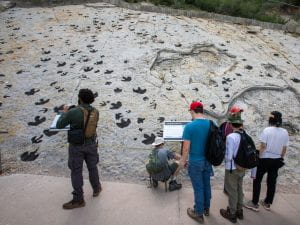
The last stop is where I acquired my new found knowledge. It is also the first time I have seen dinosaur bones in situ. Don also spoke of the discovery of the dinosaur bones by our rival paleontologists.
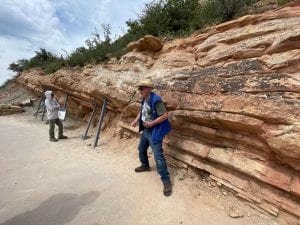
According to [https://www.pbs.org/wgbh/americanexperience/features/dinosaur-rivalry/]. “Othniel Charles Marsh and Edward Drinker Cope, former friends turned competing paleontologists, began scouring the American West for prehistoric fossil deposits in the hopes of discovering unknown species from the past. While the two scientists came from different backgrounds, their common passion for paleontology and mutual disdain for each other fueled their ambition, ultimately leading to the discovery of over a hundred new species in America.”
The discovery of dinosaur bones at Dinosaur Ridge and their excavation began in 1877 under the direction of paleontologist Marsh. Some of the best-known dinosaurs were found here, including Stegosaurus (the CO state dinosaur), Apatosaurus (of the deformation tracks), Diplodocus, and Allosaurus (one of the more famous tracks we saw exposed).
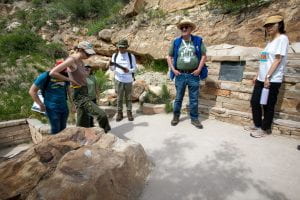
Don’s story highlighted the discoveries of the ridge, but also touched on the rivalry between Marsh and Cope. It was even said that Marsh at one point suggested that the quarries be destroyed to prevent Cope from gaining access. Theft was apparently common place. Luckily for the following generations of scientists and visitors, that never happened.
As Don was finishing up his interpretation of the stop and history of Marsh and Cope, one of our TA’s, PhD candidate Stewart Williams, brought up the origin of the word coprolite. The connection then was obvious. Turns out Marsh coined the term, using Cope’s name; something that is very common convention, to forever associate him with….poop.
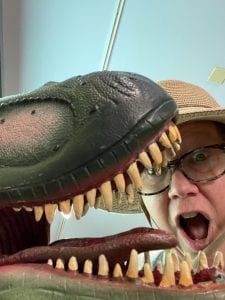 Linda Welzenbach Fries
Linda Welzenbach Fries
